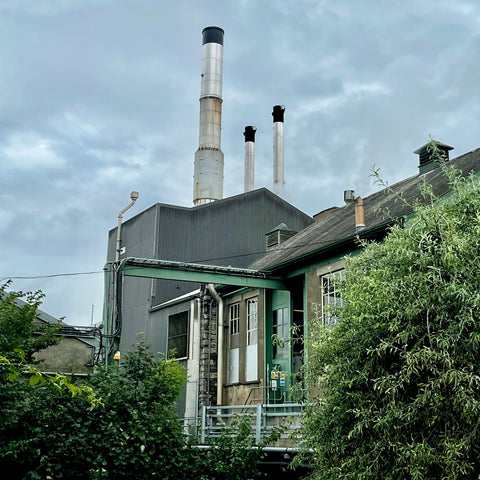
We all know how important paper is, an integral part of your day to day life and used in a million different ways, but who knew the intricacies involved in making it?
As we descended on a rainy Burneside Mill in Cumbria last week, I am not sure we were quite prepared for the scale of the operations that we saw, it was truly remarkable. The sheer size of the machinery, the heat, the smell and the noise was quite a sight to behold.

James Cropper PLC was established in 1845 when it leased a former textile mill. It is here where they made their home and honed their craft and 6 generations of Croppers later they are still pioneers of the paper industry, pushing innovation in both new materials and cutting edge packaging products but also in sustainable manufacturing.


The mill has always relied heavily on the river Kent that flows merrily past the factory. Water was once used to power the mill, and it still is but now in the form of a hydro-electric power scheme which generates 376000 Kwh. The river water is predominantly used in the paper-making process. over 91% of the water used is recycled and returned in a clean state back to the river, which is an SSSI site and home to the rare white-clawed crayfish and freshwater mussels. Croppers work closely with the environment agency to maximise clean safe water returning to the environment.
Making paper is a very wet and then a very dry process! It starts by creating a pulp from wood pulp sourced from responsibly managed sources and other reclaimed fibres which is added to water in a huge blender chest. This process is rather mesmerising to see, a swirling fluffy hot lumpy liquid!



Each blender chest has an average volume of 30,000 litres, approximately 400 baths full! This sloppy mixture is 99% water and 1% fibre when it enters the paper making machine.
The pulp passes along a huge conveyor belt of mesh wires and the water drains away using a combination of gravity and vacums, this process is called sheet formation.

The sheet of fibre is then cut to the correct width and enters the press section which squeezes even more water out between two heavy rollers.

The paper then moves to the drying section where temperatures reach up to a sweltering 140 degrees!



At the end of the drying process the paper is passed between heavy polished rollers which will determine the smoothness of the paper.
All characteristics of the paper are then scanned and measured to ensure it meets specification. at this point the paper is only 7% water.
The paper will then be rolled, cut and wrapped!

We are eagerly awaiting the arrival of our paper into the bindery this week. Seeing our paper being created has further ignited our passion for paper.
We left the stunning Cumbrian landscape with a desire to further strengthen our commitment to providing our customers with exceptional quality stationery and reminded us of the importance of cherishing the artistry behind every product we create.
You can learn even more about James Cropper Plc by heading to their website

